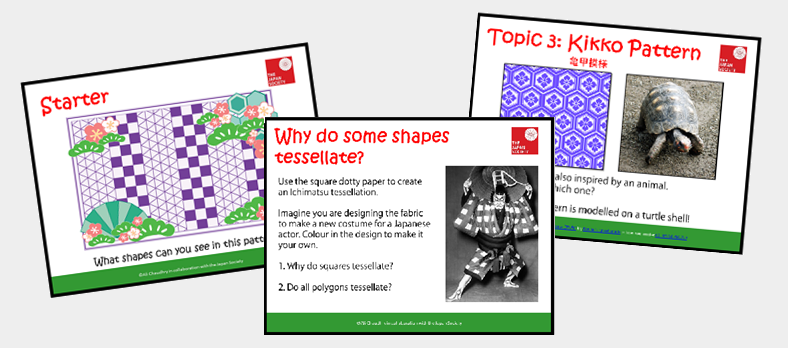Tessellation with Japanese Patterns
Subject: Maths
Level: Key Stage 3 / Key Stage 2
Age: 11-15 years / 7-11 years
Resource Type: Presentations / Lesson Plans

This standalone lesson brings Japanese culture into the maths classroom, allowing students to learn about the history and significance of three Japanese patterns (ichimatsu, uroko, and kikko) as they explore the properties of shapes.
Designed for Upper KS2 and Lower KS3, the lesson can be easily adapted by focusing on the tasks most suited to your students’ level. Extension activity ideas are also included.
Learning Objectives
- To introduce the concept of polygons and tessellation, in the context of Japanese designs.
Learning Outcomes
- To realise that angles around a point sum to 360°.*
- To understand that a tessellation occurs when angles of a shape fit perfectly around a point.
- To appreciate how these patterns have been used in Japan and their cultural significance.
*This can be achieved through a single shape for the lower year groups such as squares, triangles and hexagons, as well as tessellations with more than one shape which more able students can experiment with.
Resources
- Lesson Plan - Tessellation with Japanese Patterns - PDF (664 KB)
- Presentation - Tessellation with Japanese Patterns - PPTX (7.1 MB)


